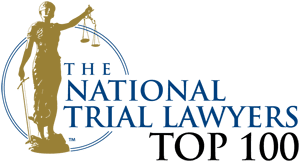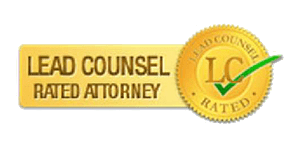What happens if someone visits a doctor to get a prescription for pain medication, and then visits another doctor for more? And then another, and another?
This is known as “doctor shopping,” and it is illegal in California.
Doctor shopping is prosecuted in California as prescription fraud (HS 11173), which makes it illegal to use fraud, deceit or concealment of a material fact to obtain a controlled substance. Prescription fraud can carry sentences as high as three years in county jail, but sentences can vary based on the facts of the case and the defendant’s criminal history.
It’s sometimes possible to avoid jail time altogether for prescription fraud charges.
For this reason, if you or someone you love has been accused of prescription fraud, it’s important to speak with a criminal defense attorney to start building your defense. It is possible to protect your freedom.
What is Prescription Fraud?
In order to convict a person of a crime, a prosecutor needs to prove that a case satisfied all of the legal “elements” of a crime. Prescription fraud has two elements:
- The defendant
- obtained, or
- tried to obtain, or
- received the administration or prescription of, or
- tried to receive the administration or prescription of a controlled substance.
- This act involved fraud, deceit, misrepresentation, subterfuge, or the concealment of a material fact.
What does this actually mean? Let’s break down the details.
Obtaining or Receiving Administration of a Controlled Substance
HS 11173 makes it illegal to:
- Obtain or attempt to obtain a controlled substance, or
- Receive or attempt to receive the administration of a controlled substance, or
- Receive or attempt to receive a prescription for a controlled substance.
In other words, it’s possible to break the law even if you didn’t actually receive a controlled substance or a prescription. There just needs to be evidence that the defendant tried to obtain a substance or prescription.
Let’s look at two examples:
Example 1: Mike engages in “doctor shopping,” visiting a number of different doctors to obtain multiple prescriptions for Vicodin. He is apprehended while attempting to pick up a prescription. Even though he hadn’t received any controlled substances, he broke the law by obtaining the prescriptions.
Example 2: Lisa visits the emergency room, requesting an injection of pain medication. She falsely claims she is having back pain from an old work injury. The ER doctor does not believe her and discharges her. Even though Lisa didn’t receive anything, she likely still broke HS 11173 by seeking the pain medication.
What Is a Controlled Substance?
This law only applies to controlled substances, which refers to any substance listed on the five classification schedules of federal and California drug laws.
The most common controlled substances involved in prescription fraud cases are:
- Adderall
- Hydrocodone (Vicodin)
- Morphine
- Oxycodone
- Ritalin
- Valium
- Xanax
- Valium
What is Fraud?
The second element to prescription fraud is that the defendant must have used “fraud, deceit, misrepresentation, subterfuge, or the concealment of a material fact” in their attempt to obtain the controlled substance.
What does that actually mean?
“Fraud” is knowingly misrepresenting the truth (lying) or concealing and important fact in order to get someone to act in a way that harms their interests. Let’s look at two more examples:
Example 1: Lisa visits the hospital and requests pain medication. The ER doctor decides that her pain levels don’t look severe enough for an opioid, so he discharges her with a few Advil. Lisa then visits a second hospital, where she is administered Dilaudid.
She doesn’t want the hospitals to track which emergency rooms she’s visiting, so she gives the second hospital a fake name. Even though she was only administered a controlled substance once, because she provided the hospital with a fake name, she likely committed prescription fraud.
Example 2: Tom is in a car accident and needs an oxycodone prescription to manage his pain. He visits a second doctor and receives a second prescription for oxycodone, which he sells to recreational users.
In this situation, Tom needed pain management and had a legitimate reason for an oxycodone prescription. However, he concealed a material fact — that he’d be selling the second prescription to recreational users — that would put him in violation of HS 11173.
Penalties for Doctor Shopping in California
Prescription fraud is a “wobbler” under California law, meaning that it can be prosecuted as a misdemeanor or felony, depending on the facts of the case and the defendant’s criminal history.
As a misdemeanor, it is punishable by:
- Misdemeanor probation (also known as “summary probation”);
- Up to one year in county jail; and/or
- A fine of up to $1,000.
As a felony, it is punishable by:
- Formal probation;
- Up to three years in county jail; and/or
- A fine of up to $20,000.
California’s prescription fraud laws are not covered by the state’s drug diversion program or Proposition 36. This means that if convicted of doctor shopping, you likely will not be able to receive court-supervised drug treatment instead of a criminal sentence.
Legal Defenses Against Doctor Shopping Charges
As we mentioned above, the penalties for prescription fraud in California can vary, and depending on the facts of your case, it can be possible to see your charges reduced or dismissed entirely.
“Mr. Helfend did an amazing job defending my case, I highly recommend him to anyone in need of a great criminal defense attorney.”Anonymous, CA
The key element to prescription fraud is the use of deception or misrepresentation to obtain the controlled substance.
What happens if a doctor quickly writes you a prescription without asking many questions? What happens if you represented yourself truthfully throughout the entire visit?
In those cases, you could have a strong defense against your charges. If you or someone you love has been accused with prescription fraud in California, it’s important to speak with a criminal defense attorney who is skilled in representing drug cases.
Robert M. Helfend has represented clients throughout the Los Angeles area for more than 40 years, earning distinguished honors from organizations like the National Trial Lawyers and Lead Counsel. Call today for your free case evaluation — 800-834-6434
References
- California Health and Safety Code § 11350. https://leginfo.legislature.ca.gov/faces/codes_displaySection.xhtml?sectionNum=11350&lawCode=HSC
- 18 U.S. Code § 1347. https://www.law.cornell.edu/uscode/text/18/1347






